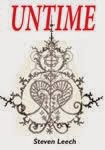
Delaware’s border with Pennsylvania is unique because it is
the only border between states that is an arc of a circle. When established by
the famed Mason and Dixon, that border proved to be imprecise and had to undergo
various minor adjustments over the centuries. Today, in that thicket of roads
and neighborhoods that dot the region, the border between Delaware and
Pennsylvania is largely invisible unless you can find those old marker stones,
or by today’s standards, encounter the welcoming signs along the roads and
highways between the states, or detect the subtle differences in road paving.
However, it is a border that’s definite enough, for example, to place the
esteemed American artist Andrew Wyeth as a Pennsylvania artist and not a
Delaware artist even though he has some connections to Delaware. These are the
kinds of connections that pour down the Brandywine River from its sources in
Pennsylvania to its terminus in Wilmington, Delaware.
A story of this small but significant river is the subject
of Delaware author Henry Seidel Canby’s The Brandywine, originally
published by Farrar & Rinehart in 1941, and more recently by Schiffer
Publishing Ltd. It is a nice complement to Canby’s earlier book about
Wilmington, The Age of Confidence, which was the subject of an earlier
post.
Initially, Canby’s The Brandywine was part of the
series “The Rivers of America,” edited by Stephen Vincent Benét and Carl
Carmer. In the book Canby reiterates the early Dutch and Swedish history of
Wilmington in the context of the Brandywine, when it was a little explored
river that the local Lenapi called the Wawaset. It was not until the English,
led largely by William Penn and the Quakers who more extensively explored the
river, realized its potential as an energy source for milling and manufacture and drove out the indigenous Lenapi, the latter being more extensively
covered by Delaware historian Clinton Weslager’s book Red Men on the
Brandywine (Hambleton, 1953).
However, the early Swedes contributed an item that was first
introduced in early Wilmington, in the settlement they called New Sweden, which
was the log cabin and which later became an American icon. Another American
icon first introduced in Wilmington, when it had been developed by the English
into a town filled with mills designed to convert grain into flour, was the
vehicle used for transporting grain and flour to and from the various mills
along the lower Brandywine. The icon, known as the Conestoga wagon, was later
referred to as the “prairie schooner,” which helped to drive American
expansionism westward. The confluence of the Brandywine with Wilmington in
those early days that spanned Delaware as a British colony and as the first of
our United States resulted in other firsts, like the earliest use of steam
power for manufacture in the country. During the final years of the British
colony, during the American Revolution, and in the earliest years of the
republic, Wilmington’s relationship to the Brandywine led the region to become
among the more important centers for manufacture, milling and transportation in
the thirteen new and independent states.
Canby, in The Brandywine, covers all aspects of the
river’s history from a recounting of the confused gallantry of the Battle of
the Brandywine during the American Revolution, fraught with its treachery by
secret loyalists, poor intelligence gathering, and Quaker equivocation under
the guise of pacifism. He covers the rise of early duPont manufacturing, which
coincided with an influx of French into Wilmington giving the name to
Wilmington’s French Street. The French influence also provided Wilmington a
sophisticated cosmopolitan flavor, which against the backdrop of Quaker
austerity, made Wilmington culturally unique for a time in comparison to other
nearby cities like Philadelphia and Baltimore.
Henry Seidel Canby, being among the foremost literary
critics of his day, addresses the literature of the Brandywine, during which he
recognizes Poe as one who was certainly acquainted with the Brandywine,
especially with regard to his relationship to John Lofland, who wrote stories
that took place along the river’s shores. Canby does not take too seriously
Lofland’s stories, Ono-keo-co, or the Bandit of the Brandywine and Manitoo,
the Indian Beauty of the Brandywine, and Wild Harry of Wilmington. He considers
both as “claptrap” designed for popular consumption though retaining reality of
background. In higher regard, as candidates for serious Brandywine literature,
are works by George Lippard, who was born at Chester Springs, and Bayard
Taylor, who was born near Kennett Square and whose works appeared after those
of Lofland and Lippard. Lippard’s novel, Blanche of the Brandywine; or
September the Eleventh 1777, published in 1846, is almost impossible to
find. Taylor’s novel The Story of Kennett was first published by Putnam
in 1866 and again by the same publisher in 1903 accompanied by photographs from
the region. Canby also speculates that the woodland in the Brandywine valley
may have been the inspiration for Howard Pyle’s novel The Merry Adventures
of Robin Hood.
Today, thanks in great part to the preservation efforts of
the Bancrofts, whose contribution Canby also acknowledges, the Brandywine’s
natural beauty is still with us to enjoy, as well as all those gentle ghosts,
conjured by Lofland, Lippard and Taylor, and others, who still haunt it through
the pages of their surviving literature.





